11 Clever Ideas for a Thriving Balcony Garden in Tight Spaces
A balcony garden is a simple way to enjoy gardening in a small space. It can include flowers, herbs, or even vegetables in pots or hanging planters. This kind of garden adds life and color to your home. You can create a peaceful spot to relax or grow fresh food right outside your door. It all starts with a little space and a few basic tools. Check more in this article.
This post may contain affiliate links, which helps keep this content free. Please read our disclosure for more info.
Choose the right plants
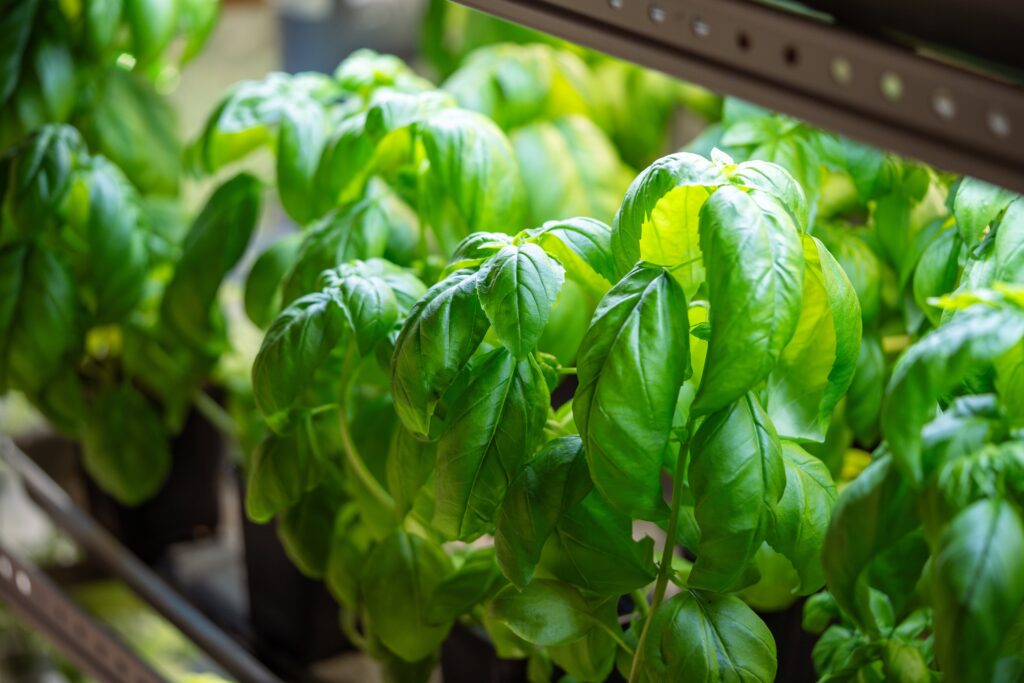
Start by picking plants that can handle your local weather and the amount of light your balcony gets. Some balconies get full sun, while others stay mostly shaded. Herbs like basil or mint do well with sunlight, while ferns prefer a bit of shade. Matching plants to your space makes care much easier.
Avoid choosing too many large plants at first. Smaller plants are easier to manage and can still give your balcony a green, vibrant feel. You can always switch things out later if you want to try something new. It is better to begin with just a few and build from there.
Use vertical space

When floor space is limited, the best solution is to go up. Hanging planters, shelves, and wall-mounted racks help you grow more without crowding the floor. You can arrange plants by height and light needs to make the most of your setup. This also makes your garden look fuller and more organized.
Stackable pots and ladder shelves work well in tight spaces. They give you more room without needing a larger balcony. You can even add hooks to the walls or railings for hanging baskets. This makes your garden feel bigger than it really is.
Pick the right containers
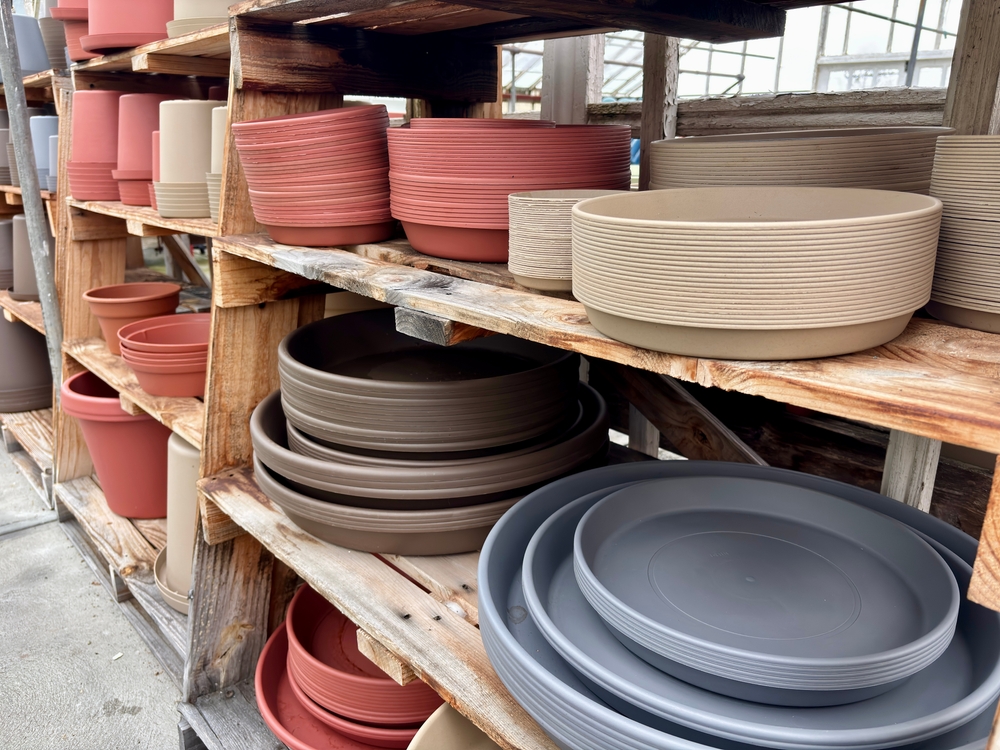
Choose containers that suit both your plants and the space available. Lightweight pots are easier to move around and work well for upper-level balconies. Make sure all containers have drainage holes to prevent soggy roots. Using saucers under each pot helps keep things tidy.
You can also reuse things like old buckets or wooden boxes as planters. Just be sure to drill holes at the bottom if needed. Grouping similar containers together makes watering simpler. It also helps your space look more put together.
Pay attention to sunlight
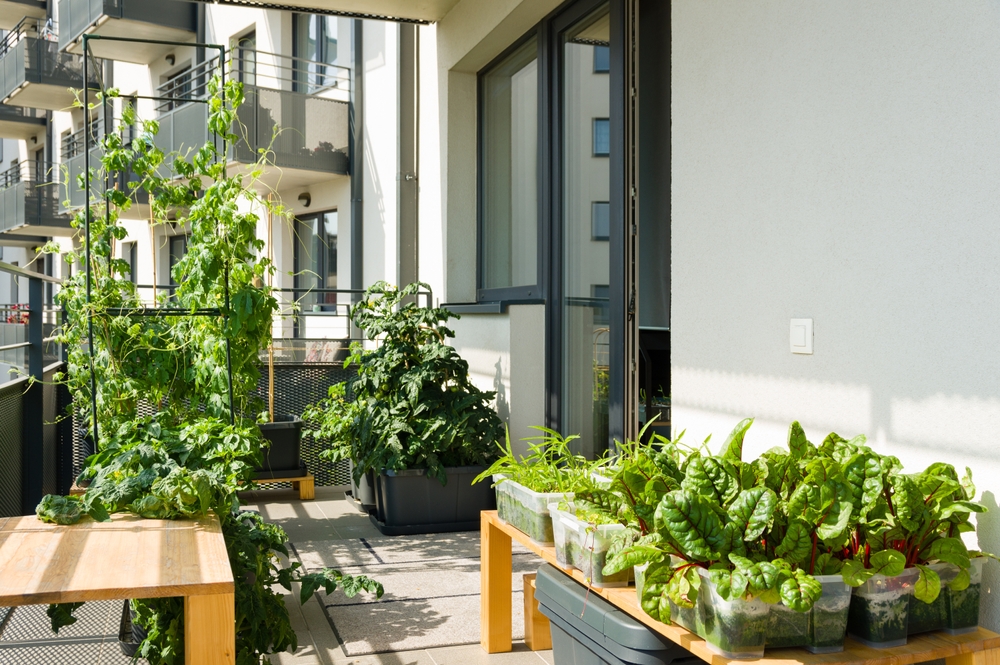
Observe how much sun your balcony gets during the day. Some spots get direct light for hours, while others are mostly shaded. Knowing this helps you choose plants that will stay healthy and happy. If your space gets little sun, look for shade-loving options.
You can move pots around during the day to catch more light if needed. A simple mirror on the wall can also help reflect sunlight onto your plants. Keep taller plants at the back so they do not block light from smaller ones. With a little planning, every plant gets what it needs.
Use lightweight soil mixes

Balcony gardens benefit from light, airy soil mixes. Regular garden soil can be too heavy and may not drain well in containers. A mix of potting soil, coco coir, and perlite works well for most plants. It keeps roots healthy and prevents water from sitting at the bottom.
You can buy pre-mixed soil or make your own blend at home. Just make sure it holds some moisture but does not stay soaked. A good mix also allows for better air flow around the roots. This helps plants grow stronger over time.
Try growing herbs and greens
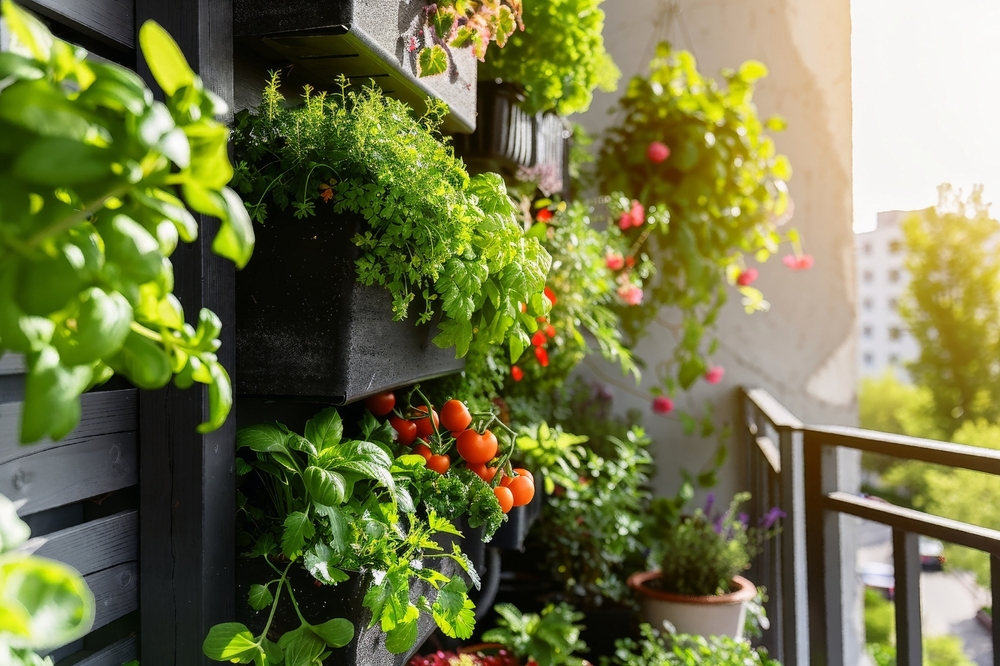
Herbs and leafy greens are perfect for small balcony gardens. They grow quickly, take up little space, and can be picked as needed. Plants like basil, parsley, lettuce, and arugula are easy to care for. They also do well in pots and window boxes.
Having fresh herbs right outside your door is convenient. You can use them for cooking or add them to salads and drinks. Most do not need a lot of sun, which makes them flexible for many balconies. Plus, they add a nice fragrance to your space.
Add a small table or stool
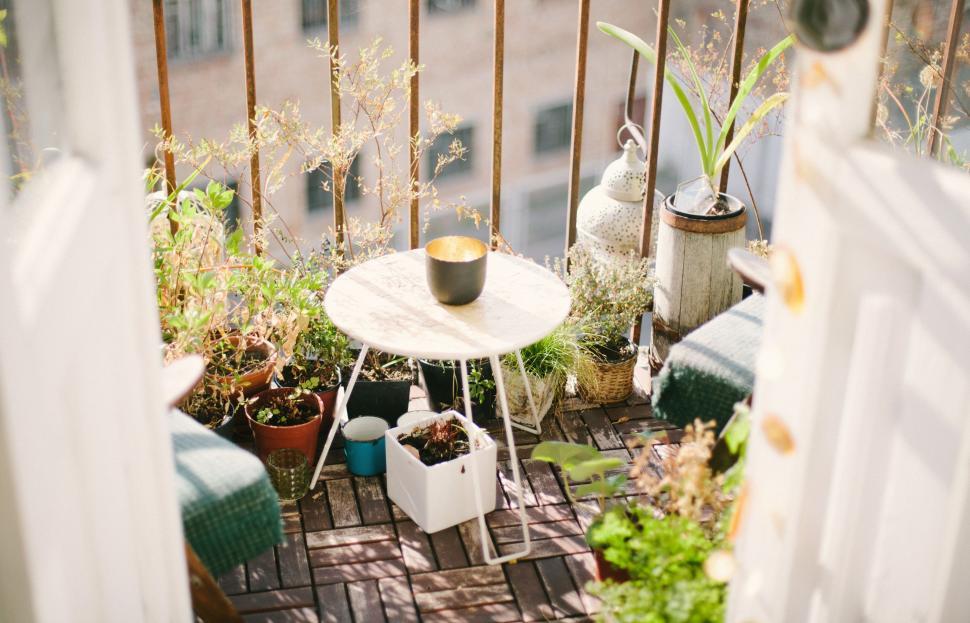
Including a small surface gives you space to work on plants or enjoy the view. A simple stool or folding table does not take up much room. You can use it to pot new plants or set down a cup of tea. It also makes the space feel more like an outdoor room.
Choose something weather-resistant and easy to move. This way, you can shift it around depending on where you need space. Some tables come with storage underneath, which can be helpful. A little furniture goes a long way in making the area more inviting.
Group plants with similar needs
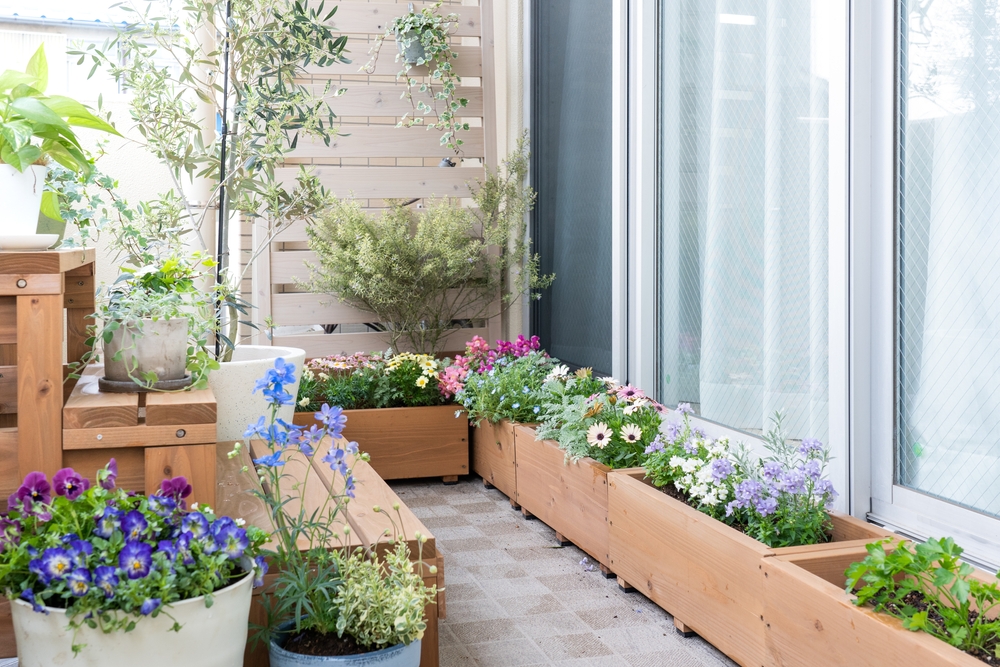
Keep plants with similar light and watering needs close together. This makes daily care easier and helps avoid overwatering or drying out certain pots. For example, group your sun-loving herbs in one spot and shade plants in another. Doing this saves time and keeps everything healthier.
You can also use different levels to organize your space. Tall plants in the back, medium ones in the middle, and small ones in front work well. It makes your garden look more balanced. Plus, it helps each plant get the light it needs.
Water wisely
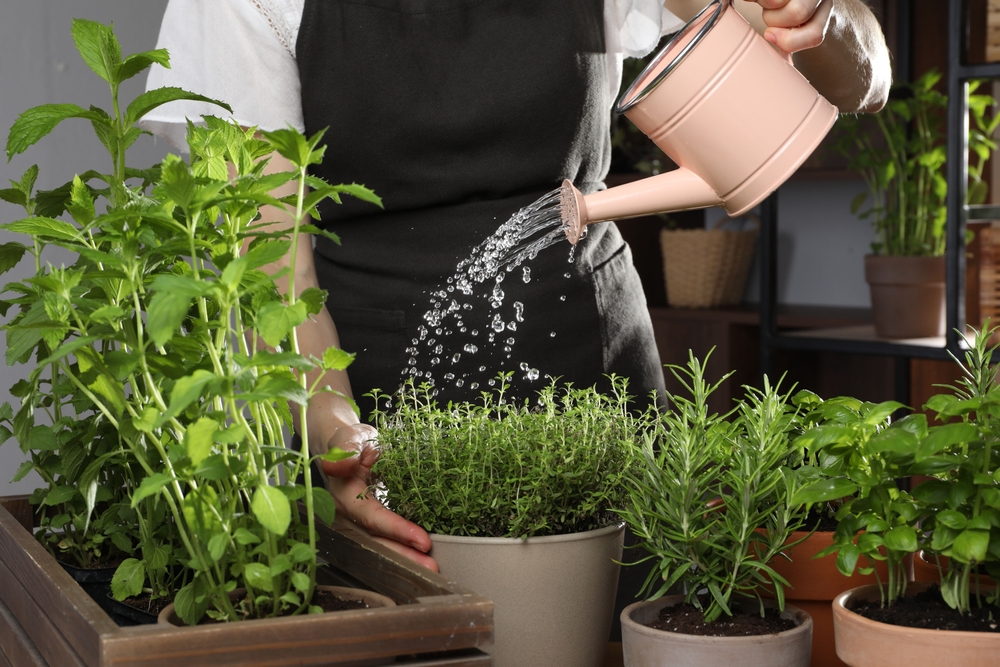
Container plants dry out faster than those in the ground. Check your soil often and water when it feels dry an inch below the surface. Early morning or late afternoon is the best time to water. This prevents the water from evaporating too fast in the heat.
Try to avoid soaking the leaves, as this can lead to disease. A watering can with a long spout helps you reach between pots without spilling. You can also add a tray underneath for extra water catch. A steady routine keeps your garden happy.
Use railing planters

Railing planters are great for saving space and adding more green to your balcony. They clip right onto the rail and can hold herbs, flowers, or trailing plants. This keeps the floor area free and adds color at eye level. It also makes watering and trimming much easier.
Choose planters that fit securely and have good drainage. You can line them with coconut fiber or mesh to keep the soil in place. Mixing different plant types gives a nice layered look. It also brings more life to the balcony without cluttering it.
Keep it low maintenance
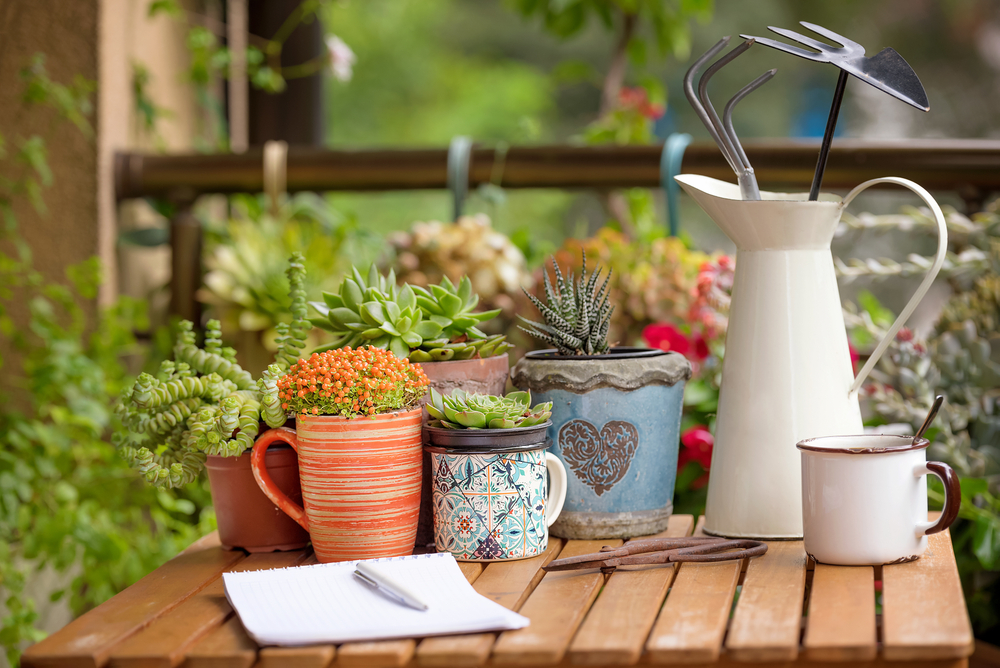
If your time is limited, go for plants that do not need constant care. Succulents, snake plants, and pothos are all great low-maintenance choices. They can handle missed watering and still grow well. This helps you enjoy the garden without too much pressure.
You can also add mulch to help the soil hold moisture longer. A watering schedule or reminder makes it easier to stay on track. Avoid filling every inch of space so it does not feel overwhelming. A simple setup is often the easiest to enjoy.
Gardening on a balcony is a simple way to bring more color and calm into your daily routine. You can grow plants that match your needs and enjoy fresh air while caring for them. Even limited space can feel open and green with the right approach. Once you get started, you might be surprised how much you enjoy it.
This article originally appeared on Avocadu.
